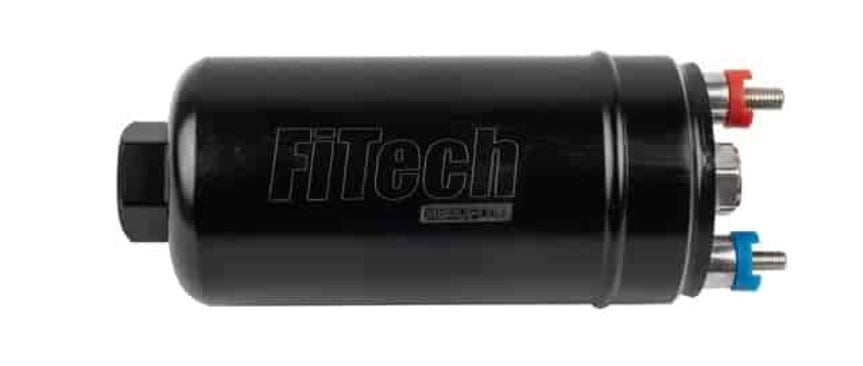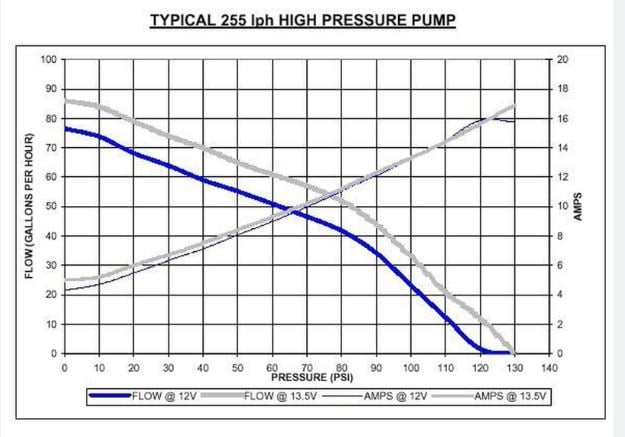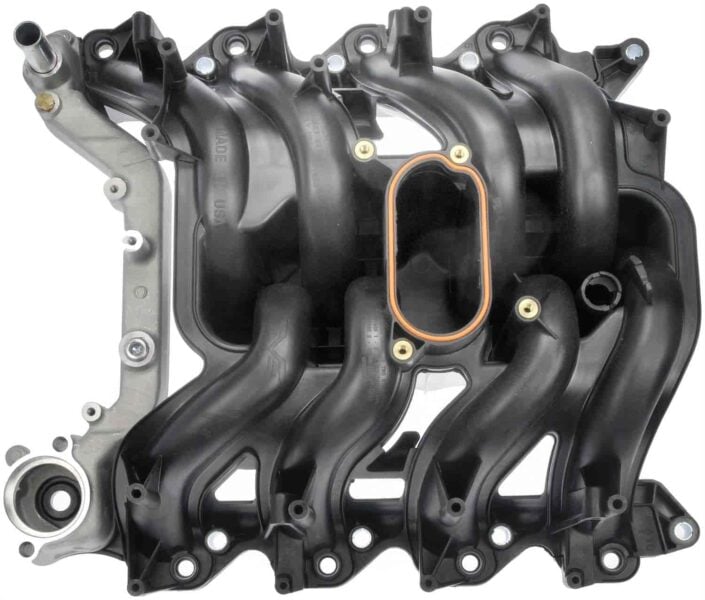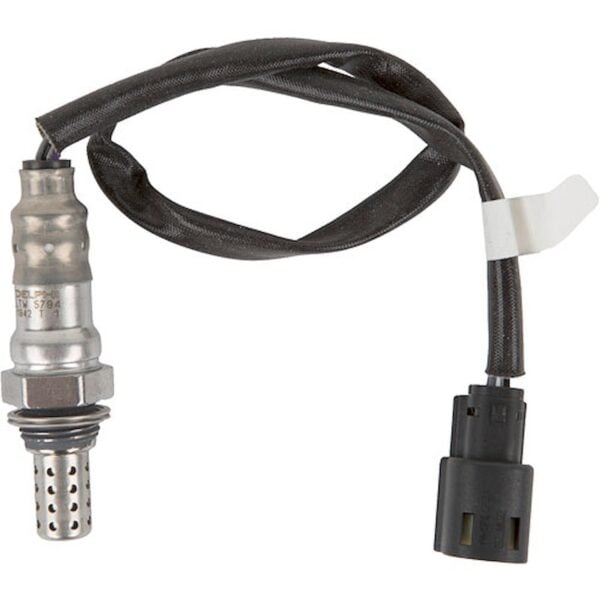
Grading your fuel pump on the curve
In this example we will look at installing a supercharger on an LS1 that is expected to make at least 10 psi of boost pressure at an Air/Fuel ratio that is optimized for the application.
Figuring wants and needs
First we have to have an idea of just how much horsepower we would like to see this pump support. In this example we will shoot for 480 HP at the engine. We will start by finding out how much fuel in Gallons per Hour (GPH) 480 HP will require.
Formulating the need:
GPH = HP x BSFC / DC% / 6.009
HP = Desired Horsepower
BSFC = Brake Specific Fuel Consumption*
DC% = Maximum Duty Cycle % of the fuel pump, we recommend not exceeding 90%.
*As a basic guide when figuring BSFC use:
| Naturally Aspirated | Supercharged |
| 0.45 (lean best power) | 0.55 (lean best power) |
| 0.50 (best power) | 0.60 (best power) |
| 0.55 (rich safe power) | 0.65 (rich safe power) |
480 x 0.60 / 0.9 / 6.009 = 53.25 GPH
Fuel Pump Size Calculator
(this is only an estimate. please contact a JEGS Tech specialist to confirm the size for your specific application)
Result:
Grading the curve
Now that we know how many Gallons per Hour of fuel the motor will need, we have to look at the total pressure the pump will be pushing against. First, find out what pressure the fuel system is required to be at. In most applications this would be the rated PSI of the fuel injectors; however in some vehicles like the LS series GM's fuel pressure is fixed at 58 psi.
Remember we are trying to find TOTAL system pressure, so we must take into account the pressure that's pushing against the fuel injectors in the intake manifold due to the boost from the supercharger. Most aftermarket injectors are rated at 43.5 psi, so in applications were system pressure is the same as the rated psi of the injector we would take the system pressure and add the 10 psi of boost pressure we are expecting to get a total of 53.5 psi.
Look at the graph below and draw a straight line at 53.5psi up to the Grey flow curve (shown in Red), then draw a straight line over to the Gallons per Hour (shown in Red). We can tell by the graph that this pump would be more than adequate to feed the motor, and would still provide enough fuel if the system voltage was low.

Graph voltage(V) represents alternator output
Liters per Hour(lph) = Gallons per Hour(gph) x 3.785
On our LS motor we would take the system pressure of 58 psi and add the 10 psi of boost pressure we are expecting to get a total of 68 psi. We can see that the pump at normal system voltage would feed the motor (shown in Pink), but at low voltage the system would run dangerously lean.




